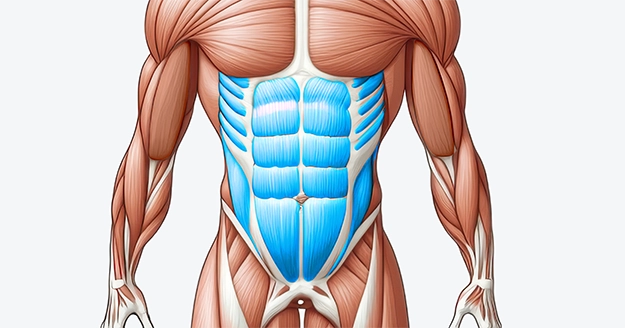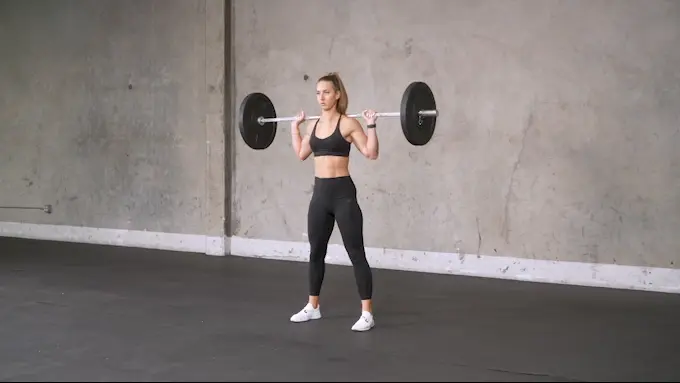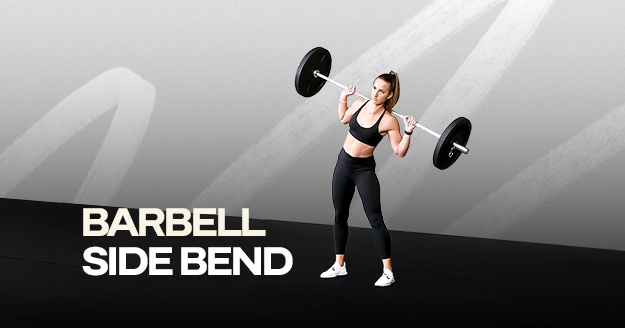Exercise Profile
Barbell Side Bend Overview
The barbell side bend is a great workout to strengthen your core, specifically targeting the obliques and stabilizing muscles along the sides of the torso. These lateral muscles are tested when you hold a barbell across the back of your shoulders while requiring full-body stability and coordination.
The barbell side bend benefits balance and posture enhancement, as it requires the activation of stabilizing muscles to maintain proper alignment. If you want to increase your rotational strength and stability, this is the best choice—which might be important for everyday functional movement and definitely important for sports performance.
It’s also an excellent addition to any strength-training regimen to enhance core endurance and posture, making it a great complement to a bend bar workout. The barbell allows for controlled progression in terms of weight, which means you can gradually increase the load as your core strength improves, leading to more significant gains in muscle development and functional strength.

Barbell Side Bend Instructions
Step 1: Hold a barbell slightly wider than shoulder width apart, racking it on your upper back. Take a hip-width stance and keep your chest up and your core engaged.
Step 2: Maintaining straight legs and level hips, bring your elbow down to your same side hip as you bend your torso laterally. Feel the stretch on the opposite side oblique as you go down.
Step 3: Then, contract your obliques and abs to return to the starting position.
Step 4: Bend to the opposite side for the next repetition. Continue alternating between the left and the right sides until you’ve completed the recommended repetitions.

Common Barbell Side Bend Variations
Several variations of the side bend can be incorporated into a workout routine to target the lateral trunk muscles with different intensities and focus. Here are some common variations:
Barbell Side Bend Tips
- Contract your core to bring your spine back to a neutral position.
- Control the movement. Avoid swinging the barbell up and down.
- Only bend to the point where you feel a stretch in your obliques and only go as far as comfortable.
Barbell Side Bend Common Mistakes
- Using Excessive Weight: Lifting too heavy might impair form and cause pressure on your lower back, preventing full engagement of the obliques as well as increasing your risk of injury.
- Leaning Forward or Backward: Tilting your body forward or backward shifts the focus away from the obliques and can strain other muscles, like the lower back.
- Uneven Barbell Placement: Holding the barbell unevenly across your shoulders might lead to tension and imbalance on one side more than the other.
Frequently Asked Questions
Are barbell side bends safe for the lower back?
Barbell side bends are safe for the lower back with proper form and appropriate weight. Avoiding excessive bending and engaging your core to prevent strain are essential.
Should I use a barbell or dumbbell for side bends?
Both are effective. A barbell provides more control and stability, whereas a dumbbell permits more unilateral emphasis and a wider range of motion, which can help correct muscle imbalances.
Can barbell side bends reduce love handles?
Weighted side bend exercises help build and tone the obliques but do not allow spot reduction. To minimize love handles, combine core exercises with a well-balanced diet and fat-burning routines.
Post your post-workout selfies in IG and tag @trainestapp, #trainest, or DM them to us to get a shoutout on Trainest Stories!



